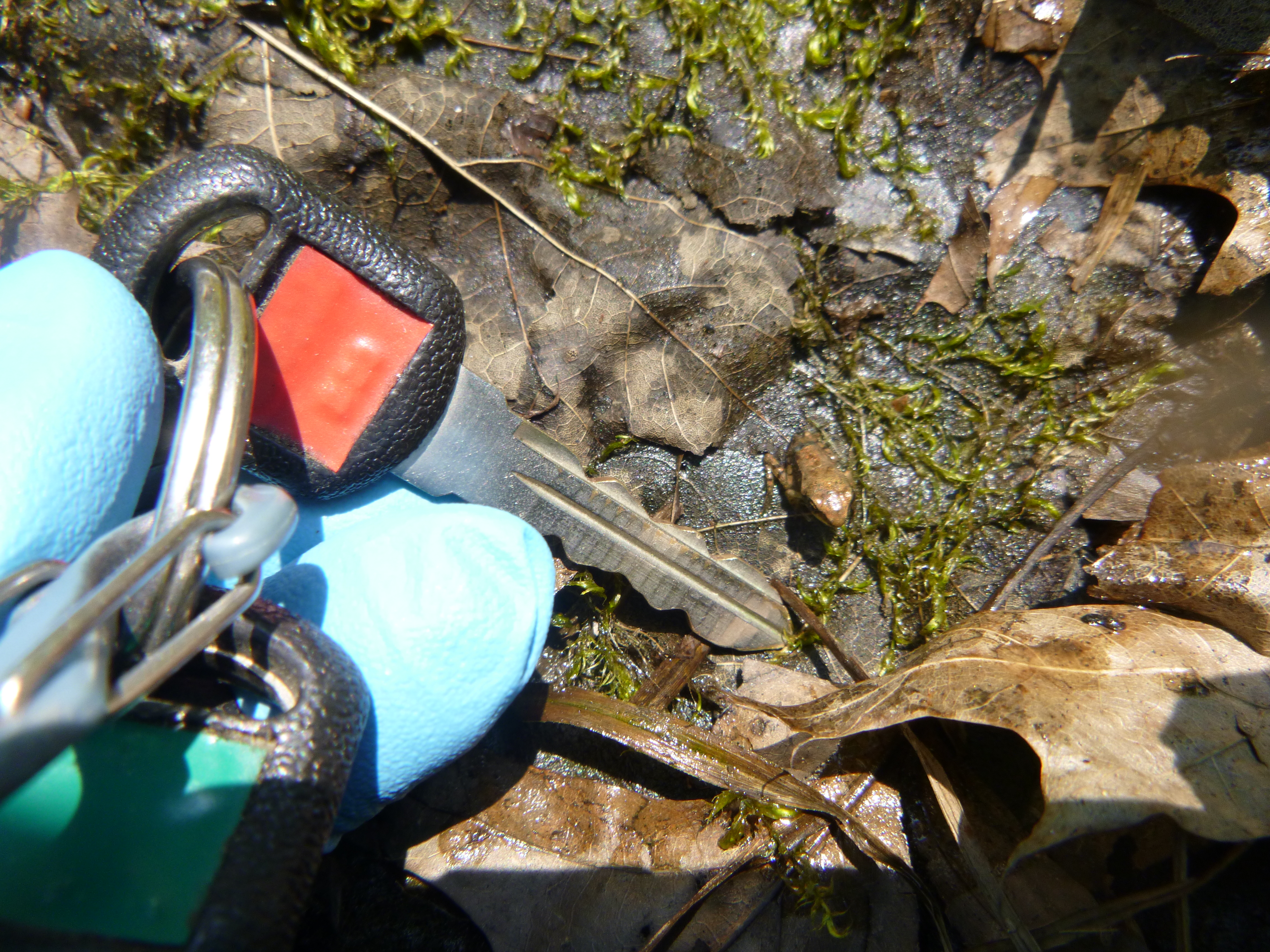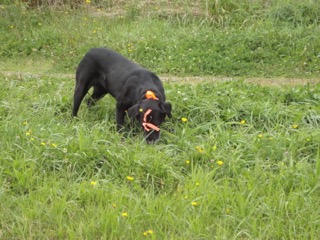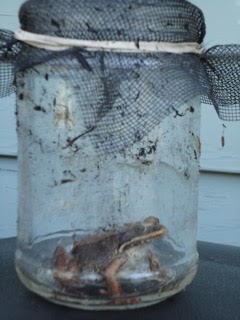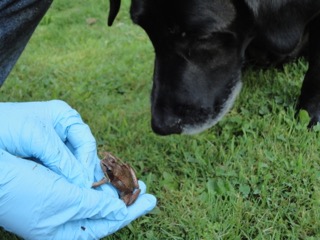Carly Eakin – PhD Researcher, University of Maine; Department of Wildlife, Fisheries, and Conservation Biology
Thomas P. Hastings – Undergraduate, University of Maine; Department of Wildlife, Fisheries, and Conservation Biology
Sure, it’s easy to find frogs in the spring and summer on rainy nights, but how do you find frogs at other times? Use dogs!

A newly emerged wood frog begins its journey into the forest (car key for scale). Photo credit: Carly Eakin
This is a question that frog researchers at the University of Maine have been asking themselves, particularly about wood frogs (Lithobates sylvaticus), one of the indicator species of ecologically “Significant Vernal Pools” in Maine. This vernal pool-breeding frog is relatively easy to find in the early spring when it is breeding and calling loudly, “g’duk-g’duk”, and the resulting egg masses can be seen floating like large blobs of clear-ish jelly on the surface of pools. However, after tadpoles metamorphose into frogs and leave the pool for their life on land, they can be difficult to track.
Wood frogs are small enough to easily fit in the palm of your hand and are the same color as the dead leaves on the forest floor. Additionally, they are most active at night. Finding these frogs on land is important for researchers to collect data about how adult frogs respond to environmental disturbances, like urbanization, in terrestrial areas. Researchers hope to gain insight into how behaviors, movements, and stress levels of animals could be affected by the conditions of their terrestrial habitats. However, finding adult wood frogs is rather difficult…for a human.
But dogs have a special knack for sniffing out things that humans can’t see.
Dogs have scent detection capabilities far outstripping humans and have been trained to find things based on their scent “signature”. Detection canines have been trained to find drugs, avalanche victims, bomb-making materials, and even some wildlife such as salamanders, turtles, and whales. Past detection canine successes make researchers hopeful that dogs can also identify individual frog species. Detection canines are relatively non-invasive for the wildlife being tracked (e.g., compared to a radio-tracking implant). Detection canines are also less expensive and are generally more effective than other wildlife tracking technologies.
Although it is very likely that a working dog can be trained to find wood frogs, this technique must be tested before it can be used in the field for a new species. First, the ability of the dogs to hone in on a single frog species needs to be tested in areas where multiple frog species co-occur in the same forest. Additionally, the rate of detection needs to be calculated to find out how often a frog is present and undetected by a dog, and how far a frog can be from a dog before it is not detected.
Although only preliminary testing of dog detection of wood frogs has been conducted by researchers Faren Wolter and Tom Hastings at the University of Maine, these early trials indicate that dogs might be able to help conserve a tiny frog species.




